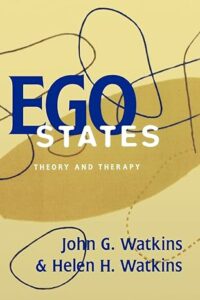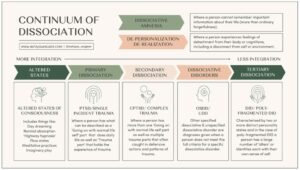Services
Ego State Therapy
 Ego State Therapy is an effective approach that was founded by John and Helen Watkins. Although it has a clear psychoanalytical foundation, results seem to be much more efficient than psychoanalysis. It is an effective and very useful approach when working with internal conflicts, especially trauma and dissociative disorders. However, it is also useful with many other clinical concerns.
Ego State Therapy is an effective approach that was founded by John and Helen Watkins. Although it has a clear psychoanalytical foundation, results seem to be much more efficient than psychoanalysis. It is an effective and very useful approach when working with internal conflicts, especially trauma and dissociative disorders. However, it is also useful with many other clinical concerns.
Ego states are the parts of our personality that make up our entire self. These parts give us the ability to adapt, think, act, and respond differently in different situations. Sometimes conflict occurs internally among different ego states and an individual may not even be conscious of why the conflict is there. Exploring and working with the different parts of our selves can produce efficient results and relief.
Click here to obtain a brochure about Ego State therapy.
Usually, Ego State therapy is combined with hypnosis in order to effectively explore the covert ego states and any internal conflict(s). This is especially useful if the conflict is not a conscious process, which is often the case. However, it should be noted that ego state theory and therapy applications can and are utilized without hypnosis as well. Many therapists assign journaling assignments such as writing to “the child within,” which certainly assumes the existence of a covert ego state.
We all have internal voices and different states of self to guide and regulate our thoughts, emotions, and behavior. These voices may help us at times and other times may cause us distress. These states are often not conscious to the self and may be influencing us in ways we are not consciously aware of. Clinical hypnosis is often utilized with Ego State therapy to give voices to these states of self and to access internal resources that you may not be consciously aware of. This can assist us in exploring symptoms as well as solutions to a variety of psychological problems, conflicts, and/or improving psychological well-being.
Ego State therapy is a commonly used approach for trauma, especially dissociative disorders. The Watkins believe ego states are separated by internal adaptive boundaries depending on need and environmental context. For instance, if someone suffered repetitive trauma as a child, they may have developed more rigid boundaries between states of self through the defense of dissociation to protect themselves. It is likely these boundaries now cause problems in functioning and/or memory impairment. Those with dissociative disorders also have parts that are in great conflict with each other. Ego State therapy provides an approach to safely manage these defenses and can assist in updating one’s internal system to function adaptively in current environment and life circumstances, improving quality of life. – Source: Ego State Therapy of North America (ESTNA)
Click here to view the Directory of therapists posted on the ESTNA website.
Goals of Ego State Therapy. 1) To locate ego states harboring pain, trauma, anger, or frustration and facilitate expression, release, comfort, and empowerment. When there are unresolved issues that are held in various ego states, this leads to internal conflict and a feeling of being out of control. 2) To facilitate functional communication among ego states. The statement “I hate myself when I am like that” indicates two states lacking in proper communication and appreciation. 3) To help clients learn their ego states so that the states may be better used to the client’s benefit (e.g., allowing the client to, at one time, be open to enjoy emotional experiences and, at another time, be assertive to feel expressed when challenged). – Source: Ego State Therapy International (ESTI)







